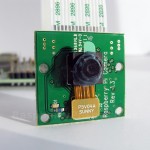Arduino Uno diagram
This is a very useful note on how to play tunes with your Arduino-compatible devices.
1. Connect your Piezo Buzzer red cable (+) in Arduino digital pin #3 and black cable (-) into ground pin.
2. Set the Led in pin #13 to blink. This will blink when a note is played.
3. The songs in this exercise are adapted from the Super Mario Bros. games back in the 80s when NES was still the king of consoles. Ported and translated from their original soundtrack score sheets, there are two songs you can choose from: Main theme and Underworld theme. You can always add and modify the tunes (given written permission from their copyright owner ;). Please make sure that the notes match with their corresponding tempos.
4. Download the pitches.h file from Arduino public domain: http://arduino.cc/en/Tutorial/Tone
5. Use and upload the following codes on to your Arduino board.
/*
Arduino Mario Bros Tunes
With Piezo Buzzer and PWM
by: Dipto Pratyaksa
last updated: 31/3/13
*/
#include <pitches.h>
#define melodyPin 3
//Mario main theme melody
int melody[] = {
NOTE_E7, NOTE_E7, 0, NOTE_E7,
0, NOTE_C7, NOTE_E7, 0,
NOTE_G7, 0, 0, 0,
NOTE_G6, 0, 0, 0,
NOTE_C7, 0, 0, NOTE_G6,
0, 0, NOTE_E6, 0,
0, NOTE_A6, 0, NOTE_B6,
0, NOTE_AS6, NOTE_A6, 0,
NOTE_G6, NOTE_E7, NOTE_G7,
NOTE_A7, 0, NOTE_F7, NOTE_G7,
0, NOTE_E7, 0,NOTE_C7,
NOTE_D7, NOTE_B6, 0, 0,
NOTE_C7, 0, 0, NOTE_G6,
0, 0, NOTE_E6, 0,
0, NOTE_A6, 0, NOTE_B6,
0, NOTE_AS6, NOTE_A6, 0,
NOTE_G6, NOTE_E7, NOTE_G7,
NOTE_A7, 0, NOTE_F7, NOTE_G7,
0, NOTE_E7, 0,NOTE_C7,
NOTE_D7, NOTE_B6, 0, 0
};
//Mario main them tempo
int tempo[] = {
12, 12, 12, 12,
12, 12, 12, 12,
12, 12, 12, 12,
12, 12, 12, 12,
12, 12, 12, 12,
12, 12, 12, 12,
12, 12, 12, 12,
12, 12, 12, 12,
9, 9, 9,
12, 12, 12, 12,
12, 12, 12, 12,
12, 12, 12, 12,
12, 12, 12, 12,
12, 12, 12, 12,
12, 12, 12, 12,
12, 12, 12, 12,
9, 9, 9,
12, 12, 12, 12,
12, 12, 12, 12,
12, 12, 12, 12,
};
//
//Underworld melody
int underworld_melody[] = {
NOTE_C4, NOTE_C5, NOTE_A3, NOTE_A4,
NOTE_AS3, NOTE_AS4, 0,
0,
NOTE_C4, NOTE_C5, NOTE_A3, NOTE_A4,
NOTE_AS3, NOTE_AS4, 0,
0,
NOTE_F3, NOTE_F4, NOTE_D3, NOTE_D4,
NOTE_DS3, NOTE_DS4, 0,
0,
NOTE_F3, NOTE_F4, NOTE_D3, NOTE_D4,
NOTE_DS3, NOTE_DS4, 0,
0, NOTE_DS4, NOTE_CS4, NOTE_D4,
NOTE_CS4, NOTE_DS4,
NOTE_DS4, NOTE_GS3,
NOTE_G3, NOTE_CS4,
NOTE_C4, NOTE_FS4,NOTE_F4, NOTE_E3, NOTE_AS4, NOTE_A4,
NOTE_GS4, NOTE_DS4, NOTE_B3,
NOTE_AS3, NOTE_A3, NOTE_GS3,
0, 0, 0
};
//Underwolrd tempo
int underworld_tempo[] = {
12, 12, 12, 12,
12, 12, 6,
3,
12, 12, 12, 12,
12, 12, 6,
3,
12, 12, 12, 12,
12, 12, 6,
3,
12, 12, 12, 12,
12, 12, 6,
6, 18, 18, 18,
6, 6,
6, 6,
6, 6,
18, 18, 18,18, 18, 18,
10, 10, 10,
10, 10, 10,
3, 3, 3
};
void setup(void)
{
pinMode(3, OUTPUT);//buzzer
pinMode(13, OUTPUT);//led indicator when singing a note
}
void loop()
{
//sing the tunes
sing(1);
sing(1);
sing(2);
}
int song = 0;
void sing(int s){
// iterate over the notes of the melody:
song = s;
if(song==2){
Serial.println(" 'Underworld Theme'");
int size = sizeof(underworld_melody) / sizeof(int);
for (int thisNote = 0; thisNote < size; thisNote++) {
// to calculate the note duration, take one second
// divided by the note type.
//e.g. quarter note = 1000 / 4, eighth note = 1000/8, etc.
int noteDuration = 1000/underworld_tempo[thisNote];
buzz(melodyPin, underworld_melody[thisNote],noteDuration);
// to distinguish the notes, set a minimum time between them.
// the note's duration + 30% seems to work well:
int pauseBetweenNotes = noteDuration * 1.30;
delay(pauseBetweenNotes);
// stop the tone playing:
buzz(melodyPin, 0,noteDuration);
}
}else{
Serial.println(" 'Mario Theme'");
int size = sizeof(melody) / sizeof(int);
for (int thisNote = 0; thisNote < size; thisNote++) {
// to calculate the note duration, take one second
// divided by the note type.
//e.g. quarter note = 1000 / 4, eighth note = 1000/8, etc.
int noteDuration = 1000/tempo[thisNote];
buzz(melodyPin, melody[thisNote],noteDuration);
// to distinguish the notes, set a minimum time between them.
// the note's duration + 30% seems to work well:
int pauseBetweenNotes = noteDuration * 1.30;
delay(pauseBetweenNotes);
// stop the tone playing:
buzz(melodyPin, 0,noteDuration);
}
}
}
void buzz(int targetPin, long frequency, long length) {
digitalWrite(13,HIGH);
long delayValue = 1000000/frequency/2; // calculate the delay value between transitions
//// 1 second's worth of microseconds, divided by the frequency, then split in half since
//// there are two phases to each cycle
long numCycles = frequency * length/ 1000; // calculate the number of cycles for proper timing
//// multiply frequency, which is really cycles per second, by the number of seconds to
//// get the total number of cycles to produce
for (long i=0; i < numCycles; i++){ // for the calculated length of time...
digitalWrite(targetPin,HIGH); // write the buzzer pin high to push out the diaphram
delayMicroseconds(delayValue); // wait for the calculated delay value
digitalWrite(targetPin,LOW); // write the buzzer pin low to pull back the diaphram
delayMicroseconds(delayValue); // wait again or the calculated delay value
}
digitalWrite(13,LOW);
}
See it in action: http://www.princetronics.com/supermariothemesong/
Now we want to play stereo sound with each speaker playing different tunes at the same time.
Great article about harmonization on piezo speakers can be found here.
[post_view]
20 thoughts on “Playing Mario Bros Tunes on Arduino with a Piezo Buzzer”
Comments are closed.



Awesome!
sweet bowl of awesome sauce!!
Would help to have pitches.h
Instructions on how to create the pitches.h file can be found here:
http://arduino.cc/en/Tutorial/Tone
Dipto, you have blown my mind! Awesome work on this!
Hey there ! thanks for this awesome piece of coding ! Im quite new to the entire arduino concept, and was wondering how one would go about getting the 2 songs to play after eachother then looping?
For example getting the theme song to play for 20 secs, then going over to the underworld one to play for another 20 secs then looping back over agian? 🙂 Cheers in advance and +1 for a great guide!
Owwww really cool!!!, Thanks for this code…
why does it say “Note_E7 was not declared in this scope” even if i have the pitches.h file and all the code posted here?
/*
Melody
Plays a melody
circuit:
* 8-ohm speaker on digital pin 8
created 21 Jan 2010
modified 30 Aug 2011
by Tom Igoe
This example code is in the public domain.
http://arduino.cc/en/Tutorial/Tone
*/
#include “pitches.h”
// notes in the melody:
int melody[] = {NOTE_E5, NOTE_E3, NOTE_B4, NOTE_C5, NOTE_D5, NOTE_E5, NOTE_D5, NOTE_C5,
NOTE_B4, NOTE_A4, NOTE_A3, NOTE_A4, NOTE_C5, NOTE_E5, NOTE_A3, NOTE_D5,
NOTE_C5, NOTE_B4, NOTE_E4, NOTE_G4, NOTE_C5, NOTE_D5, NOTE_E3, NOTE_E5,
NOTE_E3, NOTE_C5, NOTE_A3, NOTE_A4, NOTE_A3, NOTE_A4, NOTE_A3, NOTE_B2,
NOTE_C3, NOTE_D3, NOTE_D5, NOTE_F5, NOTE_A5, NOTE_C5, NOTE_C5, NOTE_G5,
NOTE_F5, NOTE_E5, NOTE_C3, 0, NOTE_C5, NOTE_E5, NOTE_A4, NOTE_G4, NOTE_D5,
NOTE_C5, NOTE_B4, NOTE_E4, NOTE_B4, NOTE_C5, NOTE_D5, NOTE_G4, NOTE_E5,
NOTE_G4, NOTE_C5, NOTE_E4, NOTE_A4, NOTE_E3, NOTE_A4, 0,
NOTE_E5, NOTE_E3, NOTE_B4, NOTE_C5, NOTE_D5, NOTE_E5, NOTE_D5, NOTE_C5,
NOTE_B4, NOTE_A4, NOTE_A3, NOTE_A4, NOTE_C5, NOTE_E5, NOTE_A3, NOTE_D5,
NOTE_C5, NOTE_B4, NOTE_E4, NOTE_G4, NOTE_C5, NOTE_D5, NOTE_E3, NOTE_E5,
NOTE_E3, NOTE_C5, NOTE_A3, NOTE_A4, NOTE_A3, NOTE_A4, NOTE_A3, NOTE_B2,
NOTE_C3, NOTE_D3, NOTE_D5, NOTE_F5, NOTE_A5, NOTE_C5, NOTE_C5, NOTE_G5,
NOTE_F5, NOTE_E5, NOTE_C3, 0, NOTE_C5, NOTE_E5, NOTE_A4, NOTE_G4, NOTE_D5,
NOTE_C5, NOTE_B4, NOTE_E4, NOTE_B4, NOTE_C5, NOTE_D5, NOTE_G4, NOTE_E5,
NOTE_G4, NOTE_C5, NOTE_E4, NOTE_A4, NOTE_E3, NOTE_A4, 0,
NOTE_E4, NOTE_E3, NOTE_A2, NOTE_E3, NOTE_C4, NOTE_E3, NOTE_A2, NOTE_E3,
NOTE_D4, NOTE_E3, NOTE_GS2, NOTE_E3, NOTE_B3, NOTE_E3, NOTE_GS2, NOTE_E3,
NOTE_C4, NOTE_E3, NOTE_A2, NOTE_E3, NOTE_A3, NOTE_E3, NOTE_A2, NOTE_E3,
NOTE_GS3, NOTE_E3, NOTE_GS2, NOTE_E3, NOTE_B3, NOTE_E3, NOTE_GS2, NOTE_E3,
NOTE_E4, NOTE_E3, NOTE_A2, NOTE_E3, NOTE_C4, NOTE_E3, NOTE_A2, NOTE_E3,
NOTE_D4, NOTE_E3, NOTE_GS2, NOTE_E3, NOTE_B3, NOTE_E3, NOTE_GS2, NOTE_E3,
NOTE_C4, NOTE_E3, NOTE_E4, NOTE_E3, NOTE_A4, NOTE_E3, NOTE_A2, NOTE_E3,
NOTE_GS4, NOTE_E3, NOTE_GS2, NOTE_E3, NOTE_GS2, NOTE_E3, NOTE_GS2, NOTE_E3,
NOTE_E5, NOTE_E3, NOTE_B4, NOTE_C5, NOTE_D5, NOTE_E5, NOTE_D5, NOTE_C5,
NOTE_B4, NOTE_A4, NOTE_A3, NOTE_A4, NOTE_C5, NOTE_E5, NOTE_A3, NOTE_D5,
NOTE_C5, NOTE_B4, NOTE_E4, NOTE_G4, NOTE_C5, NOTE_D5, NOTE_E3, NOTE_E5,
NOTE_E3, NOTE_C5, NOTE_A3, NOTE_A4, NOTE_A3, NOTE_A4, NOTE_A3, NOTE_B2,
NOTE_C3, NOTE_D3, NOTE_D5, NOTE_F5, NOTE_A5, NOTE_C5, NOTE_C5, NOTE_G5,
NOTE_F5, NOTE_E5, NOTE_C3, 0, NOTE_C5, NOTE_E5, NOTE_A4, NOTE_G4, NOTE_D5,
NOTE_C5, NOTE_B4, NOTE_E4, NOTE_B4, NOTE_C5, NOTE_D5, NOTE_G4, NOTE_E5,
NOTE_G4, NOTE_C5, NOTE_E4, NOTE_A4, NOTE_E3, NOTE_A4, 0,
NOTE_E5, NOTE_E3, NOTE_B4, NOTE_C5, NOTE_D5, NOTE_E5, NOTE_D5, NOTE_C5,
NOTE_B4, NOTE_A4, NOTE_A3, NOTE_A4, NOTE_C5, NOTE_E5, NOTE_A3, NOTE_D5,
NOTE_C5, NOTE_B4, NOTE_E4, NOTE_G4, NOTE_C5, NOTE_D5, NOTE_E3, NOTE_E5,
NOTE_E3, NOTE_C5, NOTE_A3, NOTE_A4, NOTE_A3, NOTE_A4, NOTE_A3, NOTE_B2,
NOTE_C3, NOTE_D3, NOTE_D5, NOTE_F5, NOTE_A5, NOTE_C5, NOTE_C5, NOTE_G5,
NOTE_F5, NOTE_E5, NOTE_C3, 0, NOTE_C5, NOTE_E5, NOTE_A4, NOTE_G4, NOTE_D5,
NOTE_C5, NOTE_B4, NOTE_E4, NOTE_B4, NOTE_C5, NOTE_D5, NOTE_G4, NOTE_E5,
NOTE_G4, NOTE_C5, NOTE_E4, NOTE_A4, NOTE_E3, NOTE_A4, 0,
NOTE_E4, NOTE_E3, NOTE_A2, NOTE_E3, NOTE_C4, NOTE_E3, NOTE_A2, NOTE_E3,
NOTE_D4, NOTE_E3, NOTE_GS2, NOTE_E3, NOTE_B3, NOTE_E3, NOTE_GS2, NOTE_E3,
NOTE_C4, NOTE_E3, NOTE_A2, NOTE_E3, NOTE_A3, NOTE_E3, NOTE_A2, NOTE_E3,
NOTE_GS3, NOTE_E3, NOTE_GS2, NOTE_E3, NOTE_B3, NOTE_E3, NOTE_GS2, NOTE_E3,
NOTE_E4, NOTE_E3, NOTE_A2, NOTE_E3, NOTE_C4, NOTE_E3, NOTE_A2, NOTE_E3,
NOTE_D4, NOTE_E3, NOTE_GS2, NOTE_E3, NOTE_B3, NOTE_E3, NOTE_GS2, NOTE_E3,
NOTE_C4, NOTE_E3, NOTE_E4, NOTE_E3, NOTE_A4, NOTE_E3, NOTE_A2, NOTE_E3,
NOTE_GS4, NOTE_E3, NOTE_GS2, NOTE_E3, NOTE_GS2, NOTE_E3, NOTE_GS2, NOTE_E3,
};
// note durations: 4 = quarter note, 8 = eighth note, etc.:
int noteDurations[] = {
8,8,8,8,8,16,16,8,8,8,8,8,8,8,8,8,8,8,8,8,8,8,8,8,8,8,8,8,8,8,8,8,8,
8,4,8,8,16,16,8,8,8,8,8,8,8,16,16,8,8,8,8,8,8,8,8,8,8,8,8,8,8,4,4,
8,8,8,8,8,16,16,8,8,8,8,8,8,8,8,8,8,8,8,8,8,8,8,8,8,8,8,8,8,8,8,8,8,
8,4,8,8,16,16,8,8,8,8,8,8,8,16,16,8,8,8,8,8,8,8,8,8,8,8,8,8,8,4,4,
8,8,8,8,8,8,8,8,8,8,8,8,8,8,8,8,8,8,8,8,8,8,8,8,8,8,8,8,8,8,8,8,
8,8,8,8,8,8,8,8,8,8,8,8,8,8,8,8,8,8,8,8,8,8,8,8,8,8,8,8,8,8,8,8,
8,8,8,8,8,16,16,8,8,8,8,8,8,8,8,8,8,8,8,8,8,8,8,8,8,8,8,8,8,8,8,8,8,
8,4,8,8,16,16,8,8,8,8,8,8,8,16,16,8,8,8,8,8,8,8,8,8,8,8,8,8,8,4,4,
8,8,8,8,8,16,16,8,8,8,8,8,8,8,8,8,8,8,8,8,8,8,8,8,8,8,8,8,8,8,8,8,8,
8,4,8,8,16,16,8,8,8,8,8,8,8,16,16,8,8,8,8,8,8,8,8,8,8,8,8,8,8,4,4,
8,8,8,8,8,8,8,8,8,8,8,8,8,8,8,8,8,8,8,8,8,8,8,8,8,8,8,8,8,8,8,8,
8,8,8,8,8,8,8,8,8,8,8,8,8,8,8,8,8,8,8,8,8,8,8,8,8,8,8,8,8,8,8,8,
};
void setup() {
// iterate over the notes of the melody:
for (int thisNote = 0; thisNote < 396; thisNote++) {
// to calculate the note duration, take one second
// divided by the note type.
//e.g. quarter note = 1000 / 4, eighth note = 1000/8, etc.
int noteDuration = 1000/noteDurations[thisNote];
tone(8, melody[thisNote],noteDuration);
// to distinguish the notes, set a minimum time between them.
// the note's duration + 30% seems to work well:
int pauseBetweenNotes = noteDuration * 1.30;
delay(pauseBetweenNotes);
// stop the tone playing:
noTone(8);
}
}
void loop() {
// no need to repeat the melody.
}
I posted this as an alternative to the above structure that is on this website, maybe this will work for you because I ran into this same problem with the above code. PS this is the tetris theme.
Oh another fix is change the “thisNote < 396" to "thisNote < 381" found out that if the number isnt right it just buzzes indefinitely at the end.
#include “pitches.h” instead of solved it for me!
why no melody?
Have you tried playing a single note?
Follow this tutorial
http://arduino.cc/en/Tutorial/Tone
why my buzer dont make any melody?
Thanks for the code. I used it to play the adventure time theme song. I put up a video showing how to convert sheet music to the arduino code https://youtu.be/vaQVCnPWdxk Also here is a link to the adventure time theme music code https://gist.github.com/patmandenver/79916e5df91c9d65bd6a
what the correct item for buzzer? active buzzer or passive buzzer?